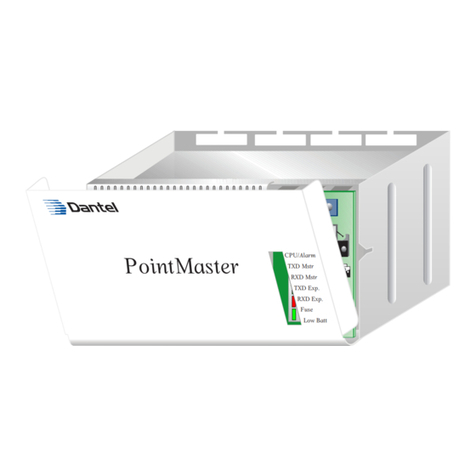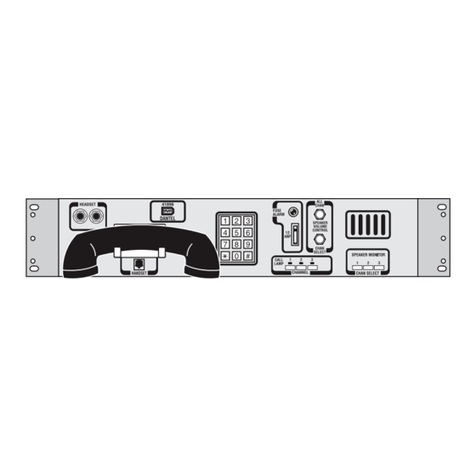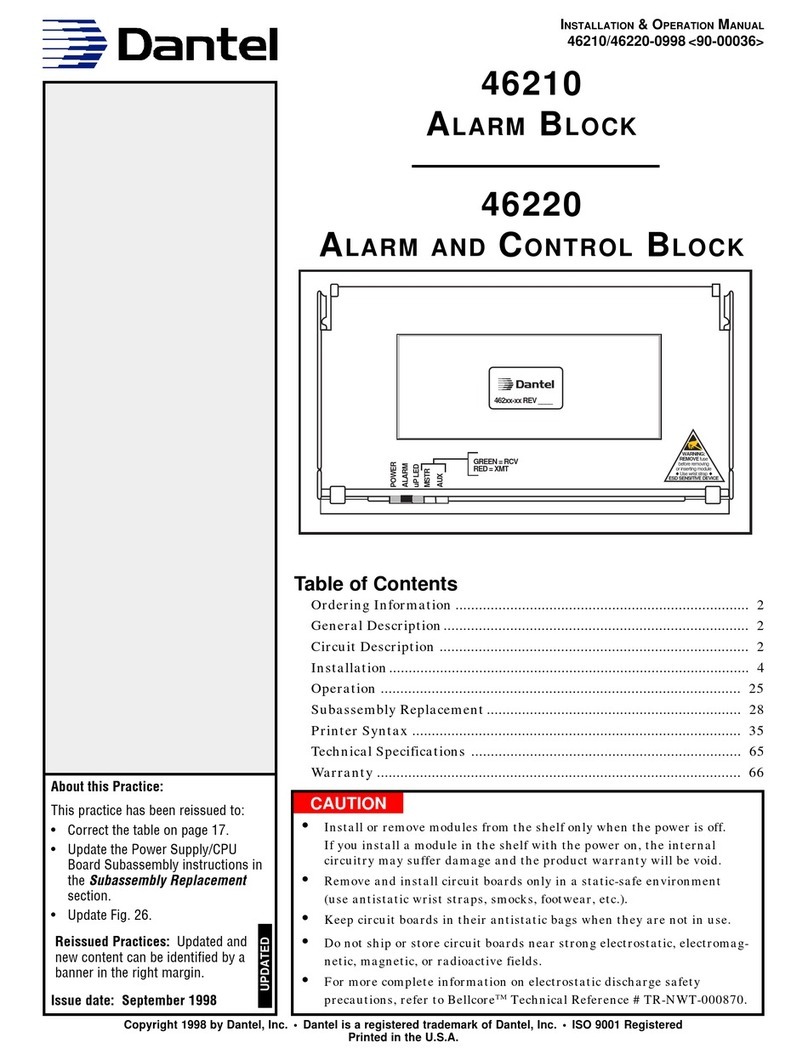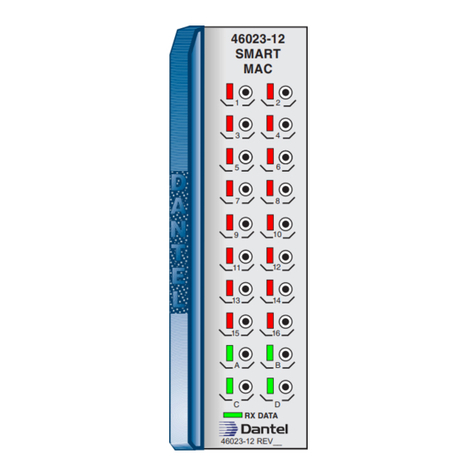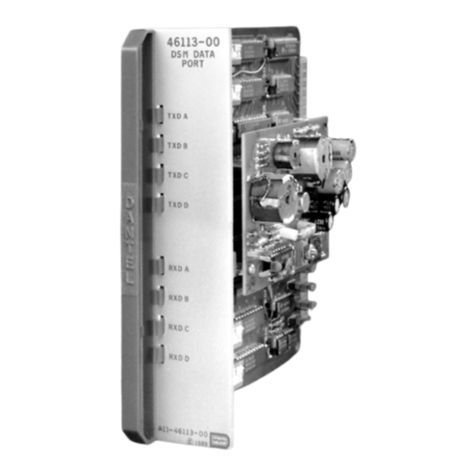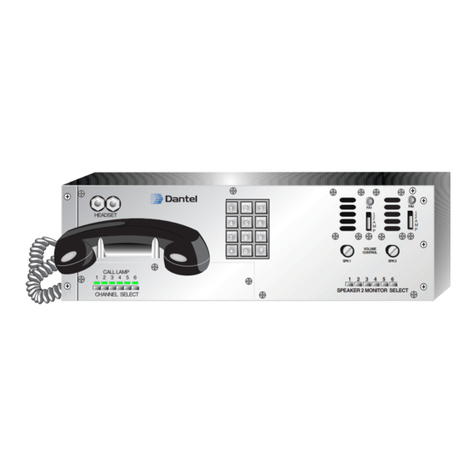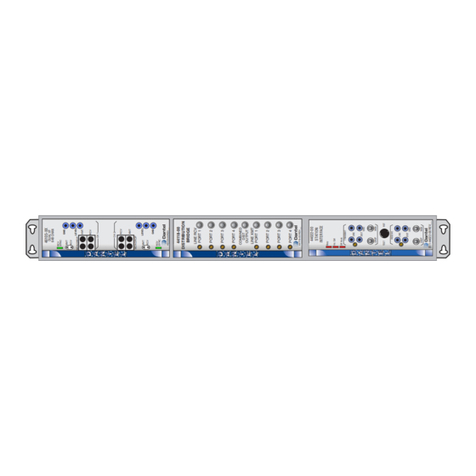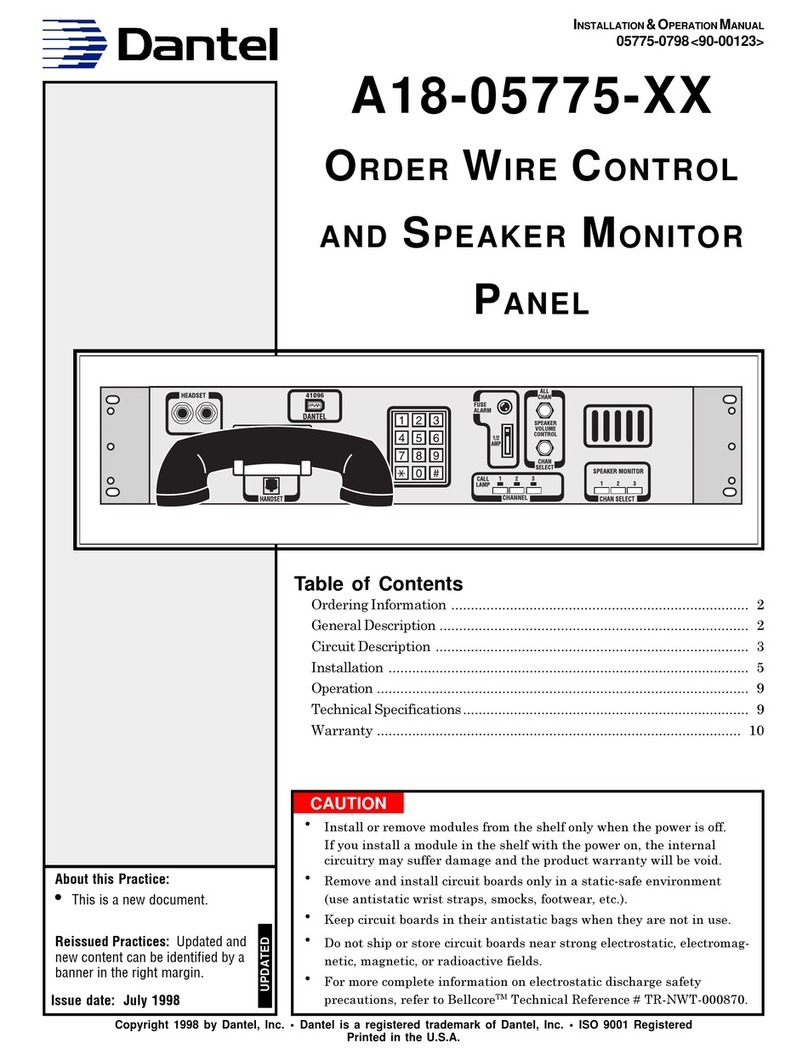
PAGE 4 44443-1098<90-00059>
Compromise Hybrid Network Circuit
In the operation of the Term Set, audible frequencies must be
received and transmitted between the 2-wire port and the appro-
priate 4-wire XMT port or 4-wire RCV port, while mutually
excluding the inappropriate 4-wire port. This is accomplished
using an impedance matching hybrid network consisting of two
cross-connected bridging transformers coupled with a balance
network and NBO circuit.
Transmit Mode
To transmit a signal from the 2-wire port to the 4-wire XMT port,
a voice frequency enters from pins 41 and 47 (2-wire line) and
flows through windings 2-3 and 4-5 of transformers T1 and T2.
Capacitors C11 and C12 (when used) complete a speech signal path
between the transformer windings and allow DC signaling to be
placed on the 2-wire line A, B, and/or D. Leads A, B, D, F, and G
are brought out to the 56 pin edge connector. The D lead is pro-
vided to allow an external signaling circuit to open and close the
path between the B and D leads.
The incoming voice signal divides equally between the secondary of
T1 and T2. The voice signal at the 4-wire RCV port is effectively
blocked by the output amplifier in the associated equipment. The
voice signal at the secondary of T2 is attenuated by a 600 ohm
switchable pad and applied to pins 55 and 49 at the
4-wire XMT port.
Receive Mode
In the receive mode, a voice frequency entering pins 5 and 15
(4-wire RCV port) is coupled to sindings 7-11 and 12-8 of T1
through a 600 ohm switchable pad. T1 and T2 are designed and
connected in such a way that equal currents are inducted into the
2-3 windings, the 4-5 windings, and the balance network 6-1
windings of both transformers.
The balance network winding 6-1 of T2 is phased to cancel the
magnetic flux in the core of T2. As a result of this phase cancella-
tion (or trans-hybrid loss), no voice signal is induced in the second-
ary windings 12-8 and 7-11 of T2. Therefore, the 4-wire XMT port
is effectively isolated from the 4-wire RCV port and 2-wire line.
To provide optimum trans-hybrid loss, the impedances terminat-
ing the 2-wire line and balance network must be equal. Half of the
voice signal is dissipated in the balance network and NBO and the
other half is applied to pins 41 and 47 (2-wire line).
Impedance matching for the Term Set network circuit may be set
up to 600 or 900 ohms. Optimum trans-hybrid loss is achieved by
selecting the appropriate capacitance combination of the NBO.
Also, an external NBO circuit may be connected to the Term Set
through pins 7 and 13. Refer to Table A, in the Installation
section.
CIRCUIT DESCRIPTION

